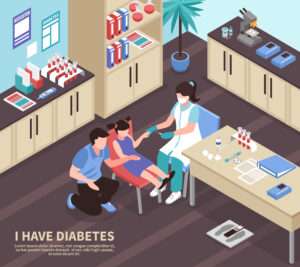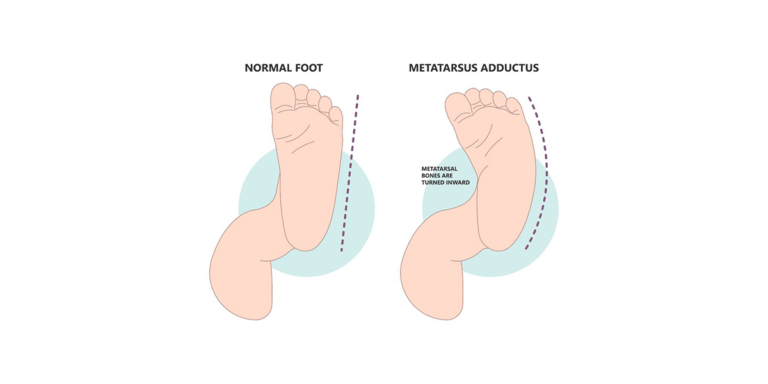Medicaid Expansion Improves Hypertension and Diabetes Controle
- Dr Owais Rafiq
- September 28, 2023
- 8:51 pm

Understanding How Medicaid Expansion Improves Health Outcomes
The connection between Medicaid coverage and better outcomes for individuals with hypertension and diabetes is a critical area of study in public health research. As the prevalence of chronic conditions such as hypertension and diabetes continue to rise in the United States, understanding the impact of Medicaid coverage on access to care and health outcomes is essential. This article explores the role of Medicaid in supporting individuals with hypertension and diabetes, addressing disparities in healthcare access and outcomes, and examining the cost-effectiveness of Medicaid interventions. By delving into these key areas, we aim to shed light on the importance of Medicaid coverage for managing chronic conditions and improving the overall health and well-being of vulnerable populations.

Introduction to Medicaid coverage for chronic conditions
Medicaid is like your healthcare fairy godparent, swooping in to provide coverage for those with chronic conditions like hypertension and diabetes. This program, funded by both federal and state governments, aims to make sure people don’t have to sell their kidney to afford medical care.
Overview of the Medicaid program
Medicaid is basically the Robin Hood of healthcare, taking from the rich (okay, maybe just the government) and giving to the poor (that’s you, with your chronic condition). It provides coverage for low-income individuals and families, ensuring they don’t have to choose between paying for their meds or their rent.
Prevalence of chronic conditions in Medicaid population
Chronic conditions like hypertension and diabetes are more common in the Medicaid population than avocado toast at a hipster brunch spot. These health issues don’t discriminate based on income, so having Medicaid coverage is crucial for managing them without breaking the bank.
Understanding the prevalence of hypertension and diabetes in the US
Hypertension and diabetes are like the power couple of chronic conditions in the US – they’re everywhere. It’s like they’re the popular kids in high school, except nobody wants to be friends with them.
Epidemiology of hypertension and diabetes in the US
Hypertension and diabetes are like that unwanted party crasher who shows up uninvited – they affect millions of Americans. With hypertension causing high blood pressure and diabetes playing around with blood sugar levels, these conditions are basically the health bullies on the block.
Disparities in prevalence among different demographics
Just like how some people can rock a mullet while others can’t, disparities in prevalence of hypertension and diabetes exist among different demographics. Factors like race, income, and access to healthcare can influence who’s more likely to have these conditions, making it a real-life game of health-related musical chairs.
Impact of Medicaid coverage on access to care for individuals with hypertension and diabetes
Medicaid coverage is like a golden ticket to Willy Wonka’s chocolate factory – except the chocolate is healthcare, and you won’t turn into a giant blueberry. It opens doors for those with hypertension and diabetes to access the care they need without emptying their wallets.
Barriers to healthcare access for Medicaid beneficiaries
Navigating the healthcare system can sometimes feel like trying to solve a Rubik’s cube blindfolded. Medicaid beneficiaries often face barriers like limited provider choices and long wait times, making it challenging to get the care they need in a timely manner.
Role of Medicaid in improving access to care for chronic conditions
Medicaid swoops in like a healthcare superhero, tackling these barriers head-on to ensure individuals with chronic conditions like hypertension and diabetes can access the care they need. From covering doctor visits to prescription medications, Medicaid plays a crucial role in ensuring no one has to battle their health issues alone.
Improving health outcomes through Medicaid coverage interventions
Medicaid isn’t just there to cover the basics – it’s like that friend who shows up with snacks and a killer playlist to make a good time even better. With interventions focused on managing chronic conditions like hypertension and diabetes, Medicaid is all about improving health outcomes and helping individuals thrive.
Effectiveness of Medicaid interventions in managing hypertension and diabetes
Medicaid interventions for hypertension and diabetes are like a well-oiled machine, working to keep these chronic conditions in check. From providing education on lifestyle changes to ensuring access to necessary medications, these interventions are all about helping individuals stay healthy and happy.
Promoting preventive care and early detection through Medicaid coverage
Prevention is the name of the game when it comes to managing chronic conditions, and Medicaid is the ultimate cheerleader in this arena. By promoting preventive care services like screenings and regular check-ups, Medicaid coverage helps catch issues early on, preventing them from turning into full-blown health dramas.
Addressing disparities in healthcare access and outcomes for Medicaid beneficiaries
Racial and socioeconomic disparities in healthcare outcomes
Let’s be real: healthcare disparities based on race and income are as outdated as thinking pineapple belongs on pizza. Medicaid beneficiaries often face hurdles in accessing quality care for conditions like hypertension and diabetes, leading to unequal health outcomes. It’s like everyone’s trying to run a race, but some are given flip-flops instead of sneakers. Not cool.
Strategies to reduce disparities in healthcare access and outcomes
To level the playing field, we need strategies more effective than trying to assemble IKEA furniture without the instructions. By targeting social determinants of health, improving provider access, and tailoring interventions to diverse populations, we can bridge the gap in healthcare outcomes. It’s time to give everyone a fair shot at finishing the healthcare marathon in style – no more flip-flops!
Cost-effectiveness and long-term benefits of Medicaid coverage for chronic conditions
Cost savings associated with Medicaid coverage for chronic conditions
Think of Medicaid coverage for chronic conditions like getting a killer deal on avocado toast – it’s both cost-effective and beneficial in the long run. By providing regular access to care and preventive services, Medicaid helps cut down on expensive ER visits and hospital stays. It’s like saving money by investing in your health – a win-win situation.
Long-term health benefits and quality of life improvements for Medicaid beneficiaries
Medicaid coverage isn’t just about playing defense against chronic conditions; it’s also about scoring touchdowns for long-term health and quality of life. By ensuring consistent medication management, preventive screenings, and lifestyle interventions, Medicaid helps beneficiaries lead healthier and happier lives. It’s like having a personal health coach in your corner, cheering you on towards better health.

Policy implications and future directions in Medicaid coverage for managing hypertension and diabetes
Current policies impacting Medicaid coverage for chronic conditions
Navigating the world of healthcare policies can feel like trying to decipher your grandma’s secret recipe – confusing yet intriguing. Current policies play a crucial role in shaping Medicaid coverage for managing hypertension and diabetes, impacting access to medications, care coordination, and preventive services. It’s like having the rules of the game determine how well you can play – understanding them is key to success.
Recommendations for enhancing Medicaid coverage for better management of hypertension and diabetes
To supercharge Medicaid coverage for chronic conditions like hypertension and diabetes, we need more than just a sprinkle of fairy dust – we need concrete steps. By expanding coverage for innovative treatments, promoting patient education, and integrating technology for better care coordination, we can enhance outcomes and quality of life for beneficiaries. It’s time to upgrade Medicaid coverage from good to great – because everyone deserves a shot at a healthier tomorrow. In conclusion, the evidence presented underscores the vital role of Medicaid coverage in enhancing the health outcomes of individuals with hypertension and diabetes. By providing access to essential care and interventions, Medicaid plays a crucial part in managing chronic conditions and promoting better health for those in need. Moving forward, continued efforts to address disparities, improve access to care, and optimize Medicaid coverage for chronic conditions will be essential in ensuring better outcomes and quality of life for all individuals, regardless of their socioeconomic status.
FAQs
1. How does Medicaid coverage impact the management of hypertension and diabetes?
2. What are some of the disparities in healthcare access and outcomes that Medicaid beneficiaries with chronic conditions face?
3. Are there specific Medicaid interventions that have shown to be effective in improving health outcomes for individuals with hypertension and diabetes?
4. What are the potential policy implications for enhancing Medicaid coverage for managing chronic conditions in the future?
Dr Owais Rafiq
Subscribe to Dr Owais YouTube channel
For parenting advice, child health, symptoms, causes and treatment of illness in children.





